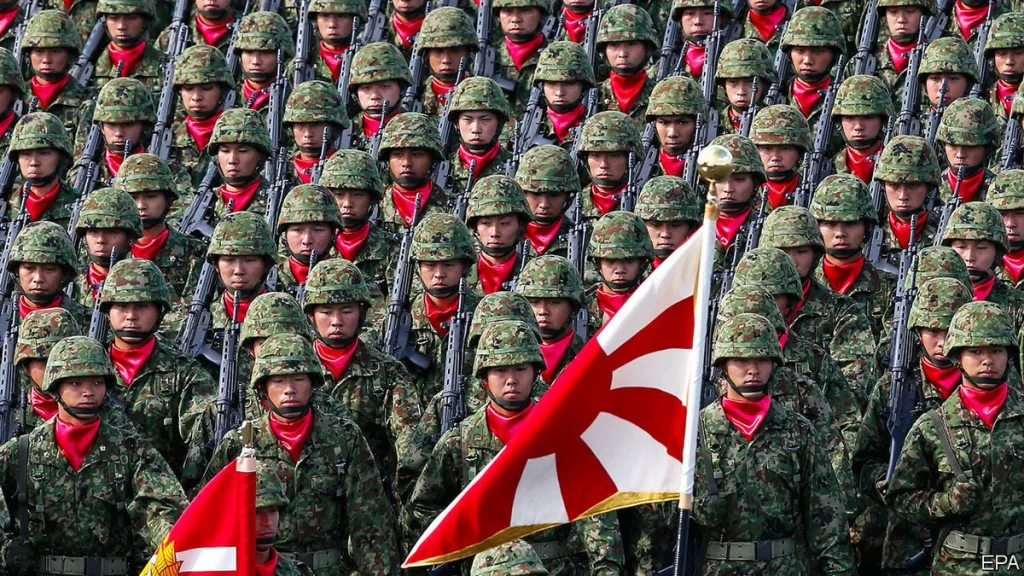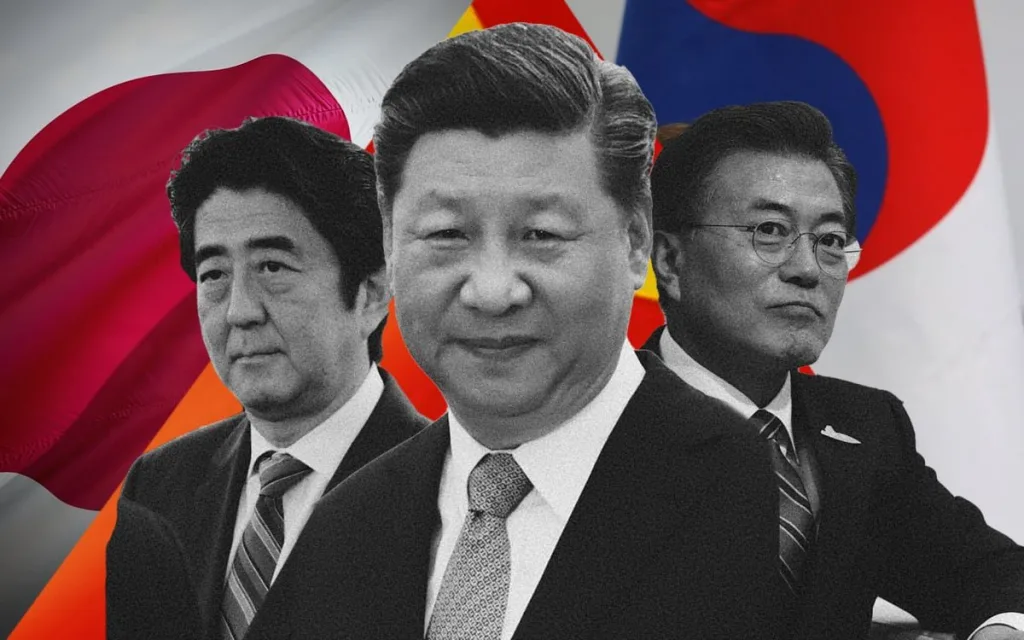In 1945, Japan Promised Never to Rebuild Its Military, But Now They Have a $320 Million Military Program, Leaving China Stunned
In 1945, Japan promised never to build a military again. But in 2022, they had enough and announced a $320 billion military program. China was stunned. The US smiled.
Here’s the story of how rising tensions in Asia triggered the biggest military buildup since World War II.

A Historic Military Buildup
In December 2022, Japan announced a historic $320 billion military buildup. The official reason given was defense modernization, but beneath the surface, a seismic shift was occurring.

This marked the end of 75 years of pacifist policy, the largest military expansion in modern Japanese history, and a fundamental reshaping of Asian power dynamics. The move signified a departure from the post-war era and the beginning of a new security landscape in East Asia.
Regional Reactions and a New Security Era
China watched Japan’s military expansion with growing concern, seeing it as a direct challenge to its regional influence. NATO allies, on the other hand, nodded in approval, recognizing Japan as a stronger strategic partner. South Korea remained cautiously optimistic, aware of both the risks and potential benefits of Japan’s military transformation. This shift was driven by China’s explosive military growth, which had altered the balance of power in the region.
The Numbers Behind the Expansion

Japan’s military buildup was not just symbolic; the numbers reflected the scale of its ambitions. Over a ten-year period, the country planned to increase its defense budget by 7.1% annually. By 2022, Japan had already allocated $229.4 billion to military spending. The expansion focused on rapidly enhancing naval and missile capabilities, allowing Japan to defend its territory against potential threats. Additionally, regular incursions near Japanese waters by foreign military forces underscored the growing tensions that justified this shift in strategy.
Shifting Public Opinion
Perhaps the most unexpected change was in Japanese public opinion. For decades, Japan had embraced pacifism, with most of its citizens opposing military expansion. However, as the regional security landscape evolved, so did public sentiment. The threat was no longer hypothetical; rising tensions with China and North Korea made the need for a stronger defense more apparent. As a result, Japanese citizens increasingly supported a more robust military policy, signaling a fundamental change in national identity and strategic thinking.
A Strategic Revolution: Counterstrike Capabilities
One of the most significant developments in Japan’s military strategy was the announcement that it would acquire “counterstrike capabilities.” This meant Japan would no longer be limited to a purely defensive stance; instead, it would have the ability to strike enemy bases if attacked. This was not just a minor policy shift—it was a complete strategic revolution. For the first time in modern history, Japan was actively preparing for the possibility of preemptive action in response to threats.
Responses from Regional Powers
Japan’s decision triggered swift but calculated responses from regional powers. The United States pledged enhanced military cooperation, strengthening its alliance with Japan. China, on the other hand, condemned what it called a “return of militarism,” expressing concerns over the potential destabilization of the region. South Korea, while wary of historical tensions with Japan, sought closer security ties in the face of common threats. Meanwhile, North Korea escalated its missile tests, viewing Japan’s military buildup as a direct provocation.
Advancements in Military Technology
Japan was not just increasing its budget; it was actively modernizing its military capabilities. The country invested in advanced missile systems to strengthen its air and missile defense. Next-generation fighter jets were being developed to enhance its air force. Additionally, Japan prioritized cyber warfare capabilities, acknowledging the growing importance of digital security in modern conflicts. Space-based defense systems also became a key area of focus, further demonstrating Japan’s commitment to staying ahead in technological warfare.
Economic and Strategic Implications
In an unexpected turn, Japan announced that its defense budget would double to 2% of GDP by 2027. This decision was not just about increasing military spending—it was a message to the world that Japan was re-emerging as a military power. While the global spotlight remained on flashpoints like Taiwan and the South China Sea, Japan’s transformation was quietly reshaping the entire regional security architecture.
However, there was one major complication: Japan’s aging population and massive public debt. The economic challenge of funding such a large-scale military expansion was enormous. With an increasingly elderly population and a shrinking workforce, Japan faced the difficult task of balancing economic sustainability with national security.
China’s Dual Strategy and New Security Partnerships
China responded to Japan’s military buildup with a dual strategy. Economically, it exerted pressure through trade policies and financial influence. Militarily, it engaged in signaling through naval exercises and strategic incursions. Diplomatically, China issued protests and worked on strengthening regional coalitions to counterbalance Japan’s growing influence.
Meanwhile, Japan was building its own network of security partnerships. It strengthened its longstanding alliance with the United States, ensuring continued military cooperation. Japan also developed closer ties with Australia, expanded its defense cooperation with India, and improved relations with South Korea despite historical tensions. This was no longer just about defense—it was about shaping the future of Asian power dynamics.
Reshaping Global Power
While daily headlines focused on immediate developments, the real story was the fundamental restructuring of Asian security architecture. Japan’s military transformation was not just a reaction to China’s growing power; it was a move that would redefine global power dynamics. The consequences of Japan’s shift would extend far beyond Asia, influencing global security, economic relationships, and the international order itself.
As Japan steps into a new era of military strategy, the world watches closely. The decisions made today will shape not only the future of Japan but the balance of power in the 21st century.